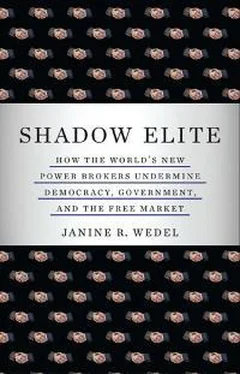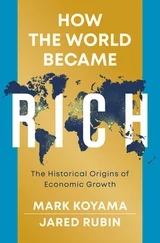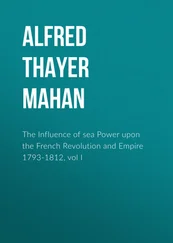67. The speaker was Admiral Leon Edney, USN (ret). The symposium was held on December 4, 2007.
68. This comparison is also made in Greg Thielmann, “Rumsfeld Reprise? The Missile Defense Report that Foretold the Iraq Intelligence Controversy,” Arms Control Today , July/August 2003, pp. 3–9.
69. The study group effort was orchestrated by the Jerusalem-based Institute for Advanced Strategic and Political Studies, where David Wurmser served as director of research in the Strategy and Politics Program. He later became director of Middle East studies and Perle’s colleague at the American Enterprise Institute and author of the 1999 Tyranny’s Ally: America’s Failure to Defeat Saddam , with a foreword by Perle (Washington, DC: The AEI Press, 1999). Meyrav Wurmser two years later cofounded MEMRI, the Middle East Media Research Institute, an organization that “monitors the Arab press for anti-Semitic opinions,” with Yigal Carmon, a former colonel in Israel’s military intelligence. MEMRI, according to journalist Jim Lobe, focuses on translating and circulating “particularly virulent anti-U.S. and anti-Israel articles appearing in the Arab press to key U.S. media and policymakers” ( Dawn , March 9, 2003). She also directs the Center for Middle East Policy at the conservative-allied Hudson Institute.
70. See Study Group on “A New Israeli Strategy Toward 2000,” A Clean Break: A New Strategy for Securing the Realm , Institute for Advanced Strategic and Political Studies, July 2006. Available at http://www.iasps.org/strat1.htm. For Perle’s involvement, see James Bamford, A Pretext for War (New York: Doubleday, 2004), p. 265.
71. Rumsfeld, who that year was chairing the first ballistic missile commission, also signed the letter. “Letter to the Honorable William J. Clinton,” Project for the New American Century , January 26, 1998, http://www.newamericancentury.org/iraqclintonletter.htm.
72. The Lobe quote is from Jim Lobe, “U.S. Right Weaves Tangled but Effective Web,” IRC Right Web, January 13, 2004, http://rightweb.irc-online.org/rw/844.html.
73. Organizations of wider or somewhat different circles set up for similar purposes include the Foundation for the Defense of Democracies, the Washington Institute for Near East Policy, the Committee on U.S. Interests in the Middle East, and the Middle East Forum.
74. For Feith as founding member, see http://www.centerforsecuritypolicy.
org/Home.aspx?Search=douglas%20feith. See also: http://www.csmonitor.com/specials/neocon/index.html.
75. The sociologist referred to here is Lawrence A. Toenjes, “U.S. Policy Towards Iraq: Unraveling the Web of People, Think Tanks, Etc.,” OpEdNews.com, http://www/opednews.com/toenjessummary.htm.
76. With regard to civil society, see Janine R. Wedel, Collision and Collusion: The Strange Case of Western Aid to Eastern Europ e (New York, NY: Palgrave, 2001), Chapter 3.
77. Quoted in George Packer, The Assassins’ Gate: America in Iraq (Farrar Strauss and Giroux, New York: 2005), p. 41.
78. Quoted in ibid., p. 29.
79. Perle is known for hosting dinners and salons in which Neocon core members, allies, and brokers such as Chalabi participate. See, for instance, Dexter Filkins, “Where Plan A Left Ahmed Chalabi,” New York Times Magazine , November 5, 2006, p. 51.
With regard to Eleana Benador, see Benador’s Web site: http://www.benadorassociates.com/bio.php. Eleana is also sometimes spelled Eliana. For Benador as an adviser to the Middle East Forum, see Holly Yeager, “Of All Things: Power Behind the Throne—Eleana Benador,” Financial Times , August 9, 2003. In 2007, Benador said she would be devoting her energies to her new firm, Benador Public Relations, which appears to have distanced itself from any particular political persuasion. For Benador clients, see http://www.sourcewatch.org/index.php?title=Benador_Associates. For a profile of Eliana Benador and information about her clients, see Jim Lobe, “The Andean Condor Among the Hawks,” Asia Times , August 15, 2003, http://www.atimes.com/atimes/Front_Page/EH15Aa01.html.
80. The Neocon core has ties with Chalabi that go back more than two decades. Perle met Chalabi, another protégé of Albert Wohlstetter, through Wohlstetter in 1985. Aram Roston, The Man Who Pushed America to War: The Extraordinary Life, Adventure, and Obsessions of Ahmad Chalabi (New York: Nation Books, 2008), p. 134. Perle invited Chalabi to conferences at the American Enterprise Institute, where he met Wolfowitz and others who became key players under Bush II—Dick Cheney and Donald Rumsfeld. Chalabi maintained close ties to Cheney, as well as to members of the Neocon core at Bush II’s Pentagon, notably Wolfowitz, Feith, Ledeen, Harold Rhode (a core ally and U.S. Defense Department analyst), and William Luti, a core ally and undersecretary of defense for Near Eastern and South Asian Affairs (ibid., p. 183; pp. 134–135).
The Neocon core and Chalabi needed each other in the service of promoting their own interests—the first stop being the use of American might to overthrow Hussein. They needed his persona as a potential Iraqi leader; he needed the legitimacy, contacts, and funds they would help him secure. Despite his record of conviction for bank fraud and untold frozen assets, in 1992 the CIA put him on their payroll via a front company (pp. 99–100). The Agency aimed to assemble what looked like a solid Iraqi opposition (pp. 87–90). From the very beginning, Chalabi had a plan: As Roston put it: “CIA officers who knew him best, even those who like him,” say that “his goal . . . was always simply to rush America to war. . . . One of the former officers who knew Chalabi throughout said there is simply no doubt: ‘an invasion is what he always wanted’” (p. 107).
Toward that end, Neocon core members helped Chalabi secure many of the millions of U.S. taxpayer dollars he received beginning in the 1990s and through the first several years of the U.S. occupation of Iraq. With the Neocon core and the neoconservative Project for the New American Century as lobbyists (including core member Woolsey and his law firm, Shea & Gardner [Chris Suellentrop, “Ahmed Chalabi: Why Shouldn’t a Politician Be President of Iraq?” Slate.com, April 9, 2003, p. 167]), the Republican-controlled Congress passed and President Clinton signed the 1998 Iraq Liberation Act. This rendered the toppling of Saddam Hussein official U.S. policy and provided $100 million to support democracy promotion, of which the INC was the principal beneficiary (ibid.). In the late 1990s, separate taxpayer dollars were given to a Washington public relations firm, with ties to Bush II, to promote the INC (Roston, The Man Who Pushed America to War , p. 169).
After 9/11, Chalabi’s activities in the service of the neoconservatives’ agenda became even more vital. He made the case to officials and the public alike. Not long after the attacks on the Pentagon and the World Trade Center, he spoke at a secret meeting of the Defense Policy Board (held on September 19 and 20, 2001), at the invitation of Chairman Perle—a nineteen-hour meeting to which Secretary of State Colin Powell was not invited, and of which he was not informed or briefed (Elaine Sciolino and Patrick E. Tyler, “A Nation Challenged: Saddam Hussein; Some Pentagon Officials and Advisors Seek to Oust Iraqi Leader in War’s Next Phase,” New York Times , October 12, 2001, http://query.nytimes.com/gst/fullpage.html?res=950DE2DD153
FF931A25753C1A9679C8B63 [accessed 19 August, 2008]). Chalabi told audiences “that it would be easy” to remove “Saddam” and replace him with a government that was friendly to Israel—if the United States would provide minimal support to an armed insurgency organized by the INC. Ultimately, under Bush II, Chalabi and the INC would be granted close to $40 million from the U.S. State Department. Exactly what the United States received in return for these dollars has been questioned by numerous commentators (Jane Mayer, “The Manipulator Ahmad Chalabi Pushed a Tainted Case for War. Can He Survive the Occupation?” The New Yorker , June 7, 2004, p. 58). On the latter point, see also Roston, The Man Who Pushed America to War , p. 116. For reporting on Chalabi’s funding and history of support from members of the Neocon core, see also Bamford, A Pretext for War .
Читать дальше












